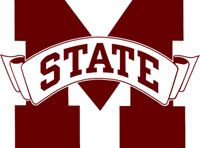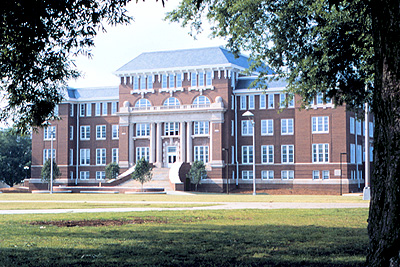From 2006.igem.org
(Difference between revisions)
|
|
| Line 60: |
Line 60: |
| | |} | | |} |
| | | | |
| - | # Overview of project(s), including schematics and figures | + | {| cellspacing="2px" cellpadding="0" border="0" style="padding: 0; width: 750px; color: #000000; background-color: #ffffff;" |
| - | # Ongoing data/updates about project(s), including schematics, figures, test data, and biobrick parts used | + | | width=717px style="padding: 5px; background-color: #ffffff; border: 2px solid #993300;" | |
| - | # Some photos of your team, facilities, institution, etc.
| + | |
| - | # Optionally, anything that broadcasts your team's personality, spirit, sense of fun, or coolness...
| + | <h3>H<sub>2</sub> Reporter</h3> |
| | + | |
| | + | * |
Revision as of 18:22, 17 July 2006

Welcome to [http://www.msstate.edu Mississippi State University!]
|

- [http://www.abe.msstate.edu/Undergraduate/Biological/ Swalm Engineering Building]
|
The Team
Faculty Members:
- Dr. Filip To Agricultural and Biological Engineering
- Dr. Bob Reese Electrical and Computer Engineering
- Dr. Tod French Chemical Engineering
- Dr. Din-Pow Ma Bio Chemistry
Students:
- Teri Vaughn Undergraduate, Senior, Biomedical Engineering
- Lauren Beatty Undergraduate, Junior, Biomedical Engineering
- Scott Tran Undergraduate, Junior, Biological Engineering
- Robert Morris Grad student, Biological Engineering
- Meng-Hsuan Ho Grad student, Molecular Biology
- Brendan Flynn Grad student, Mechanical Engineering
- Jaclyn Isonhood Grad student, Chemical Engineering
|
Project Abstract
- "H2 Reporter Using E. coli"
- We want to build a machine that will quantify H2 produced from burning biomass
To Do List
- Continue student lab work in Dorman 406 to build H2 Reporter
- Possibly modify BioBricks for design/creation of machine
- Publicity: Submit article and pictures to [http://www.engr.msstate.edu/alumni_friends/momentum_magazine/Momentum]
|
Introduction
- International Genetically Engineered Machine (iGEM) is a student-led competition to build the most innovative "machine" by synthetic biology.
- Headquarters is located at the Massachusetts Institute of Technology.
- In 2006, 38 schools and over 400 students from around the world are participating in projects to construct biologically engineered systems.
- Task of each team is to apply engineering methodology to design and develop a new biological system ("machine") through the use of existing and/or newly formed microscopic biological parts (termed BioBricks).
- Type of the "machine" is chosen by each individual school participating, and the only criterion is that the "machine" be made entirely of the functional units of DNA called BioBricks.
- A registry of all BioBricks is kept in the MIT Registry of Standard Biological Parts, which is regularly updated to include new parts developed by teams.
- Parts for each iGEM team are obtained through the Registry for a fee.
- Jamboree for students to present their projects will take place at MIT in November.
|

